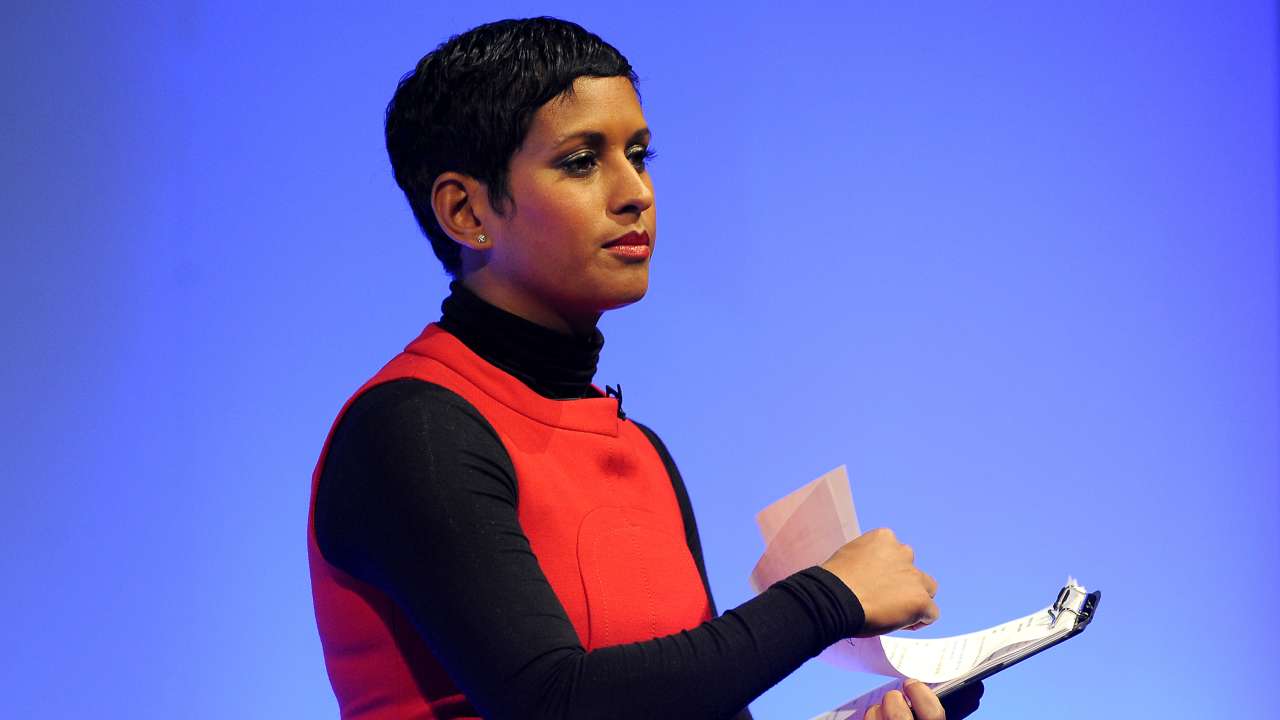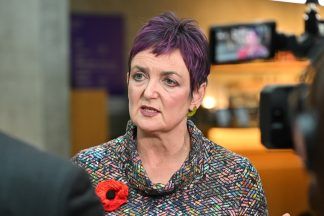BBC presenter Naga Munchetty has publicly spoken about her journey with the debilitating womb condition adenomyosis.
The 48-year-old revealed on Monday that over the weekend she had to deal with pain so intense she “screamed non-stop for 45 minutes.”
The BBC Breakfast presenter is currently resisting the hysterectomy route – a surgical procedure to remove the womb – though it is an option many women with the condition choose to take.
One in 10 women is thought to have adenomyosis, but it can often go undiagnosed for years or is mistaken for the more widely-known endometriosis.
What is adenomyosis?
Adenomyosis is a womb condition that occurs when the tissue that normally lines the uterus, endometrial tissue, grows into the muscular wall of the uterus.
It can affect one part of the womb or the whole womb.
While it is not normally life-threatening, medical professionals have acknowledged the severe symptoms and the huge impact they can have on day to day life.
It is more common in women aged 40-50 years and who have had children.
What are the symptoms?
The most common symptoms of adenomyosis are:
– Heavy periods that last for a long time
– Severe period pain
– A feeling of pressure in your stomach
– Bloating
– Pain during sex or when you poo
It is also possible to have adenomyosis and no symptoms.
What causes adenomyosis?
It is not currently known exactly why adenomyosis happens. It is not infection nor is it contagious.
How is adenomyosis diagnosed?
One of the reasons adenomyosis can take so long to be diagnosed is because the symptoms and severity can vary between women.
After seeing a doctor about symptoms, they will carry out a pelvic examination.
They will look at the vulva, vagina and cervix to see if there is something that could be causing the symptoms, and often other tests might be needed.
As an intimate examination, the doctor who performs it will have another person – a chaperone – present.
The doctor might refer the patient onto a specialist to carry out more tests, such as ultrasound or an MRI, which will allow an expert to look at the womb.

What is the treatment for the condition?
The right treatment can depend on symptoms but other factors as well, including age, desire for children, views on surgery and what treatments have been tried already.
The most common options include:
– Anti-inflammatory medication to help relieve mild pain
– Treatment during your period to help reduce the amount of menstrual blood loss
– Hormone therapy such as the contraceptive pill, to help control heavy or painful periods
– A hysterectomy, in which the womb is removed, but this would only be considered in extreme cases, where other treatments do not work and if the woman does not want to become pregnant
Follow STV News on WhatsApp
Scan the QR code on your mobile device for all the latest news from around the country




























